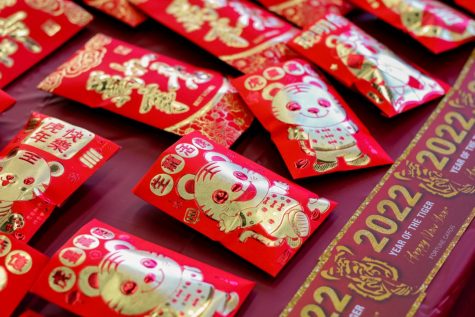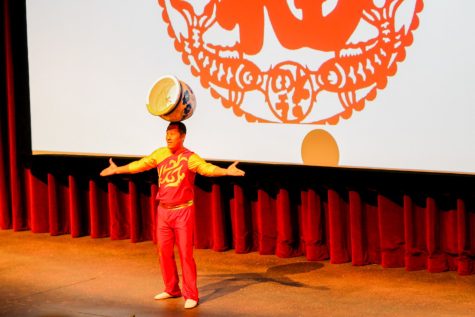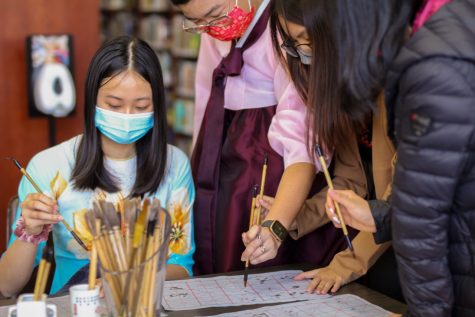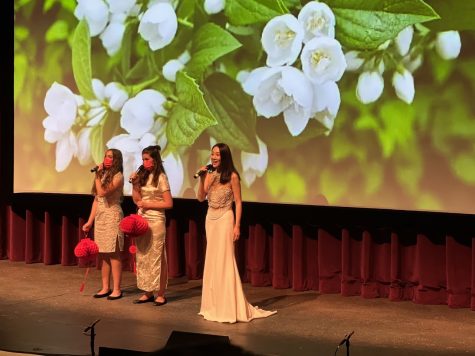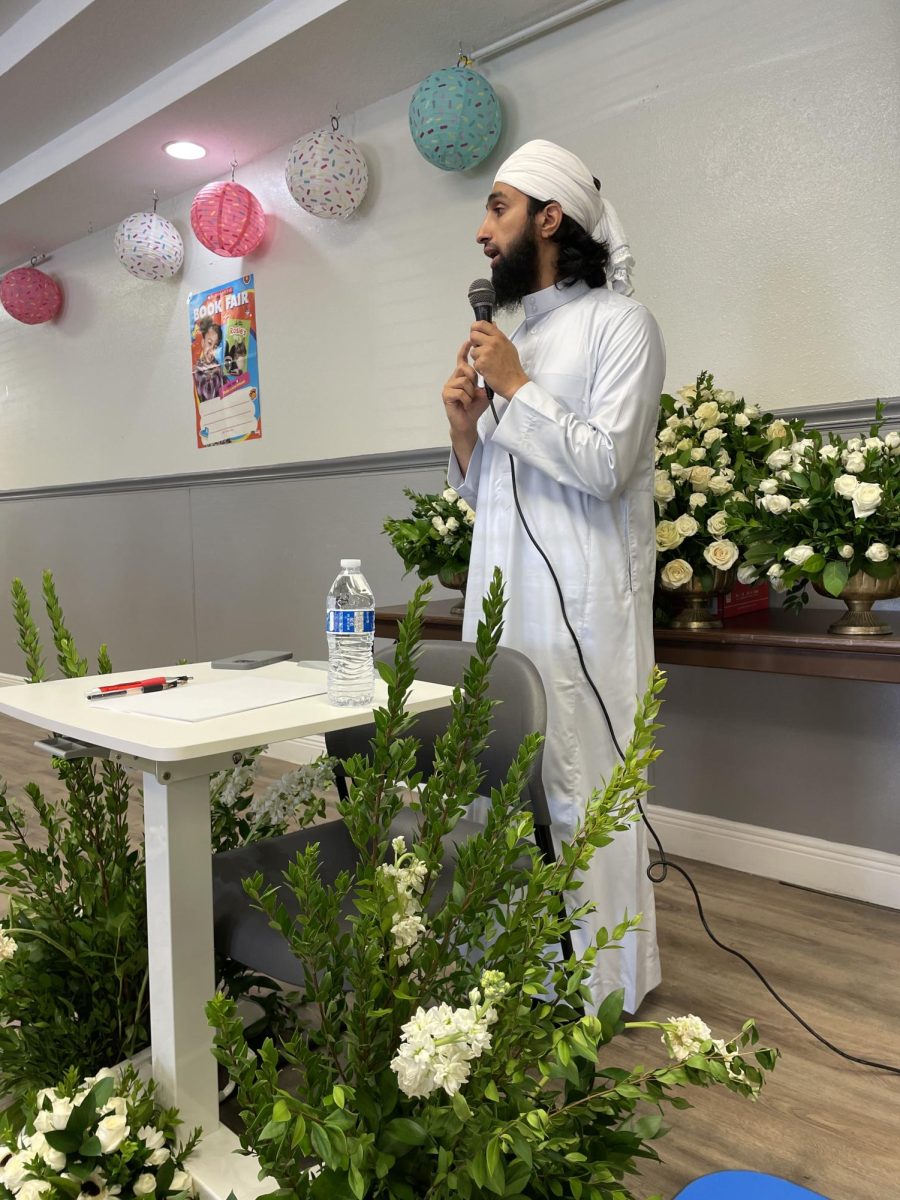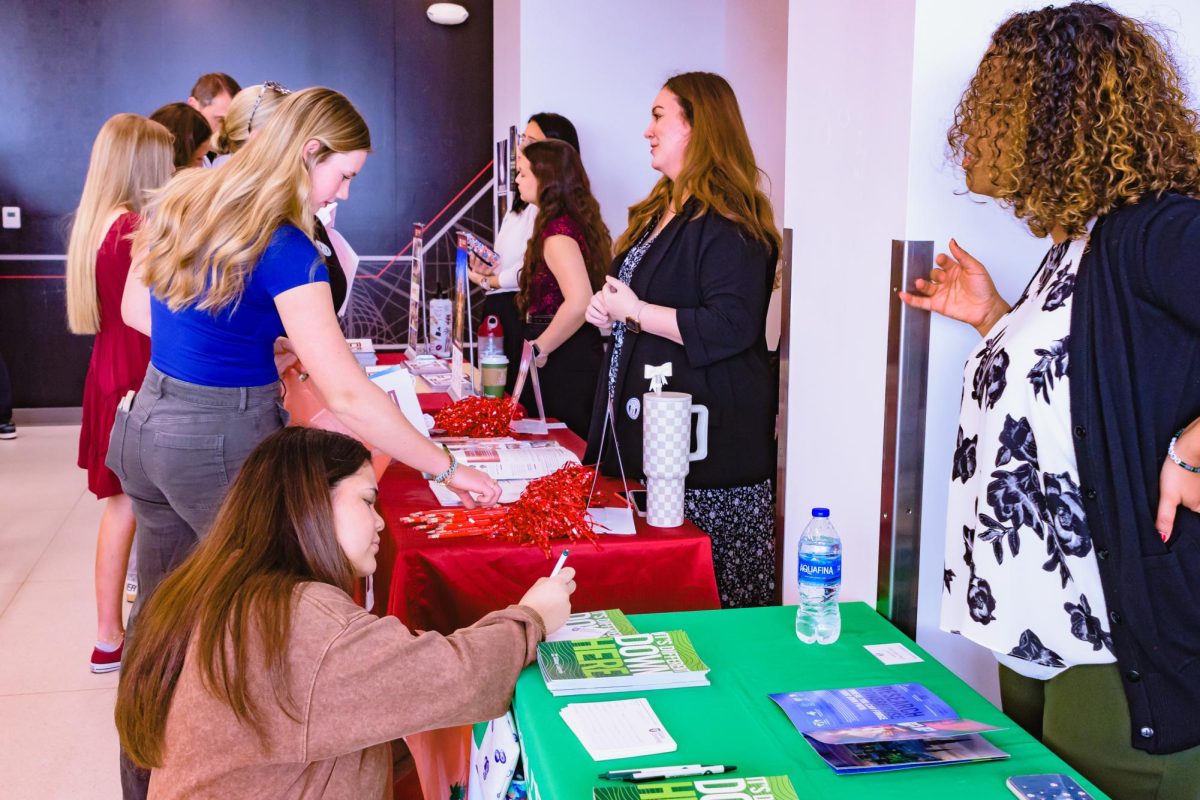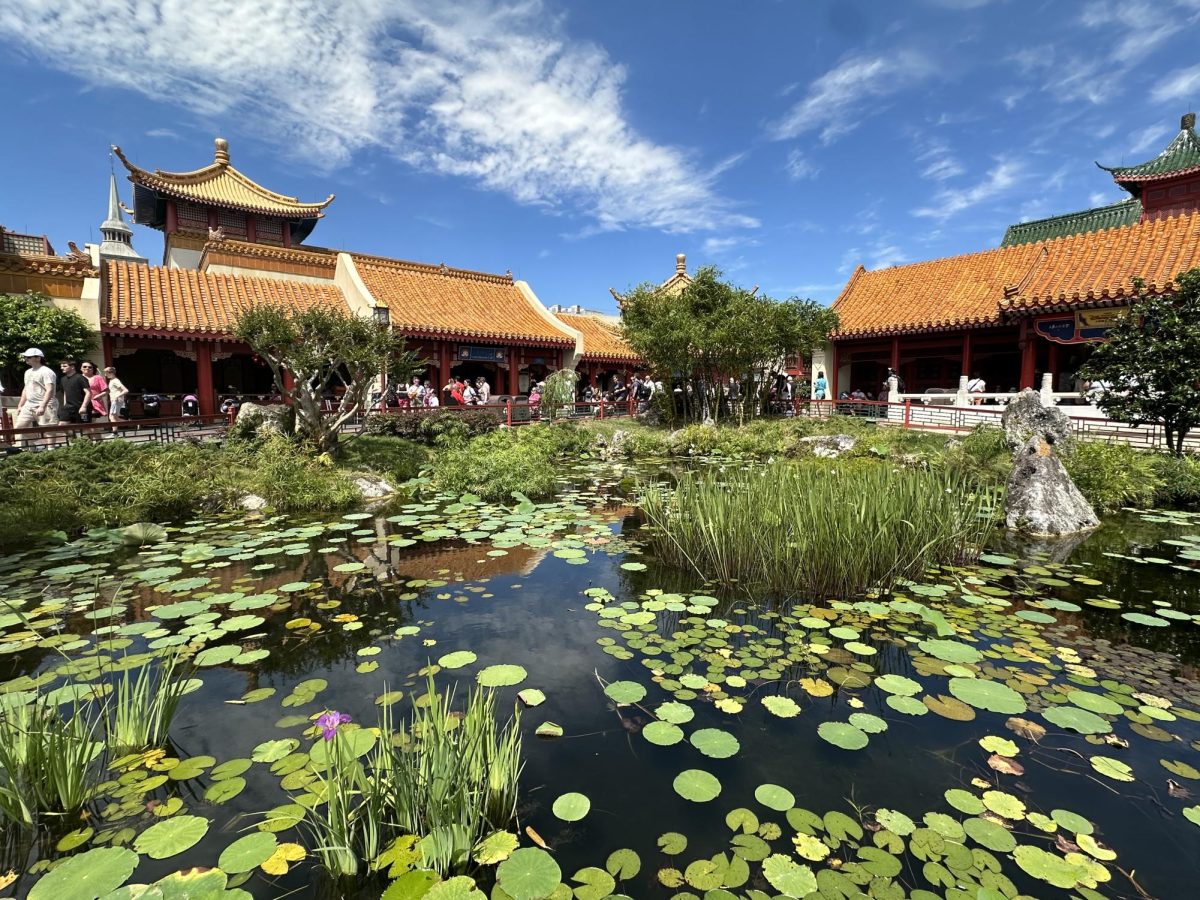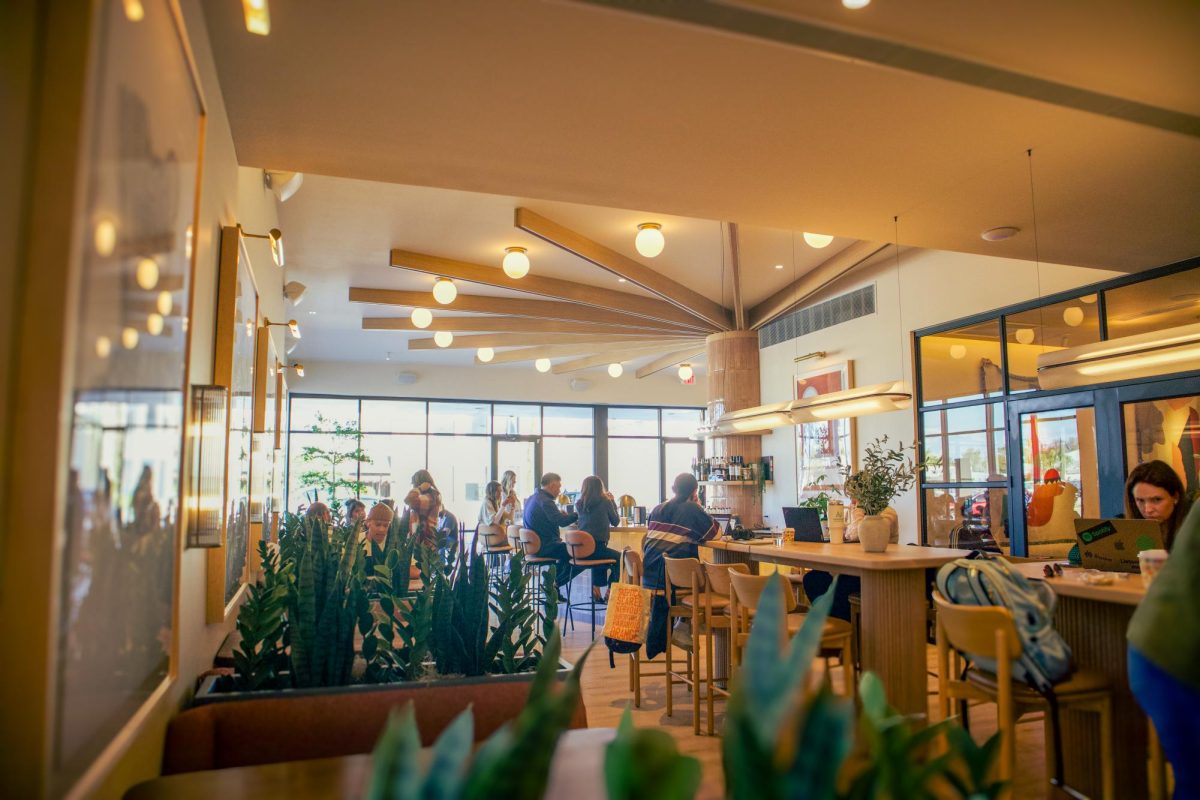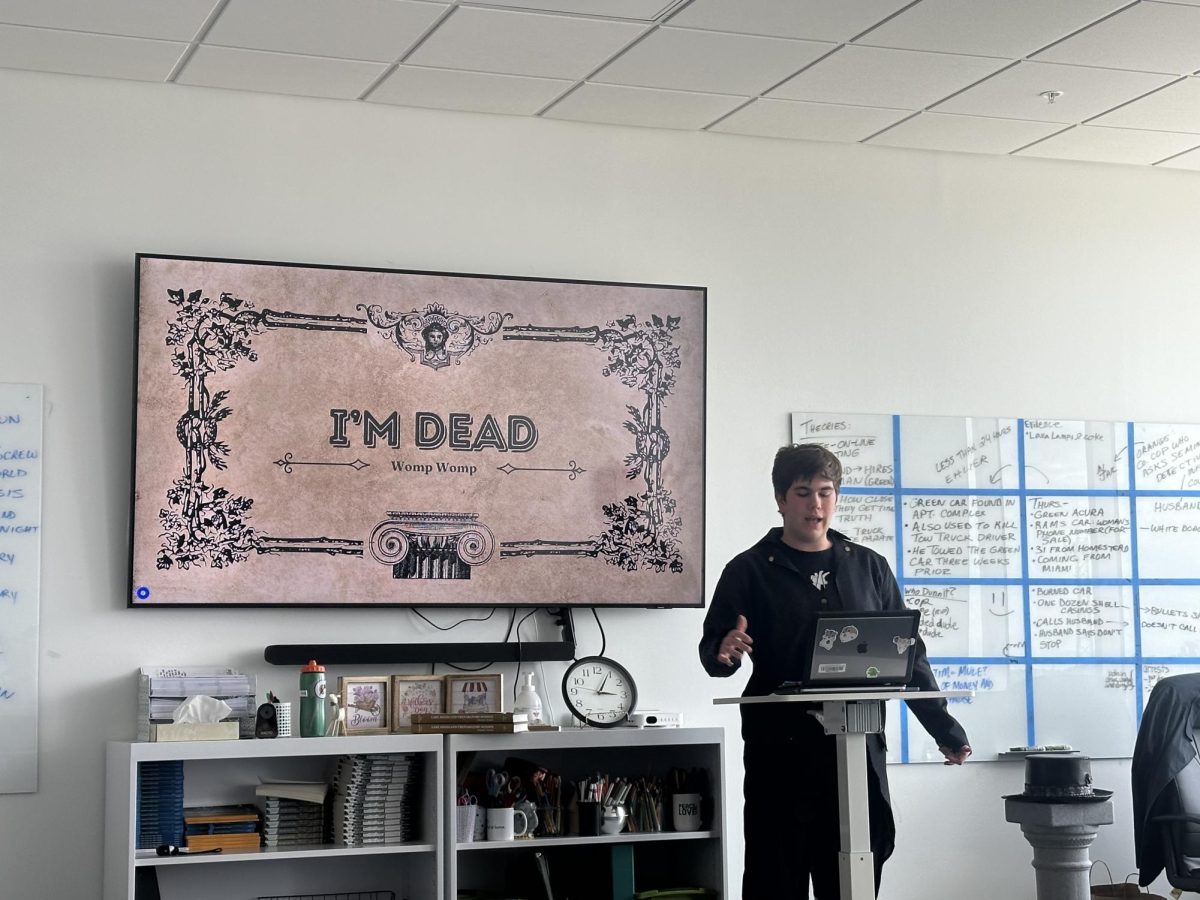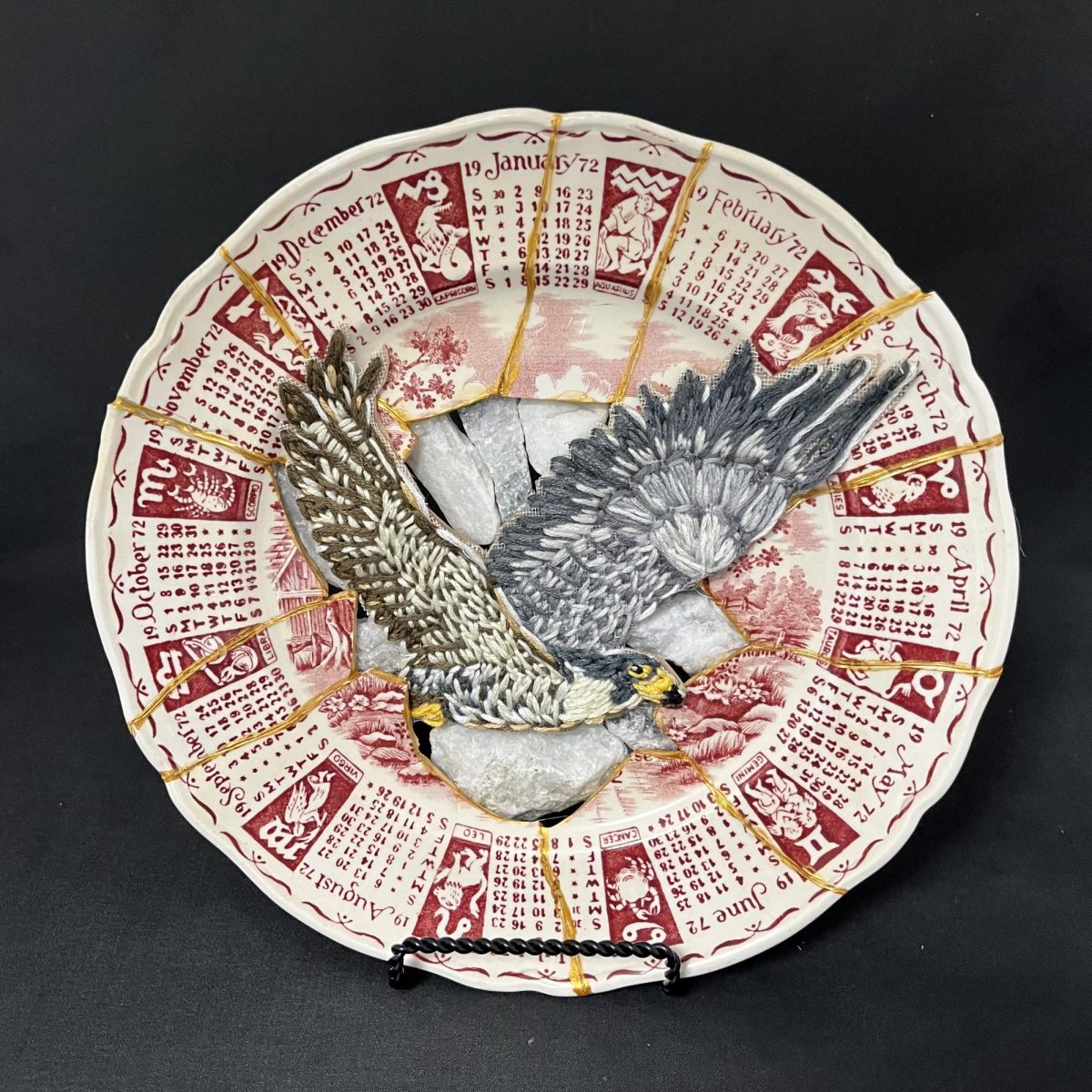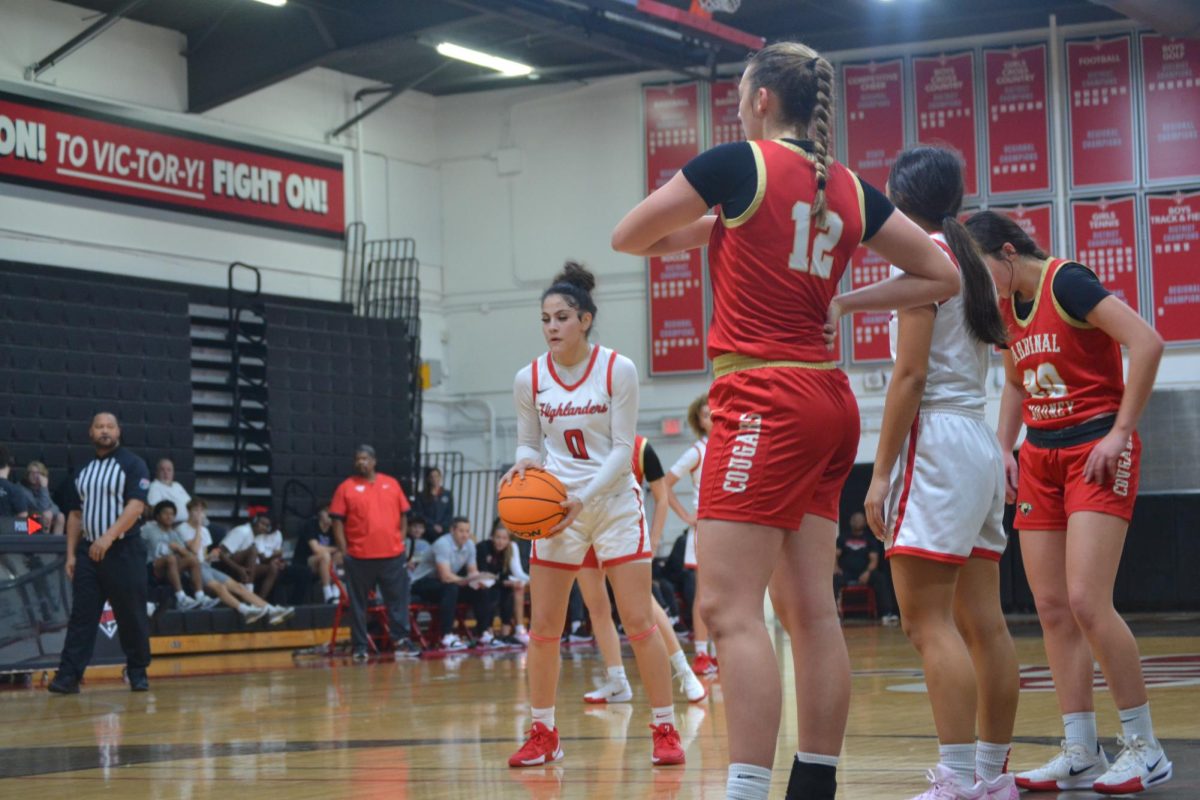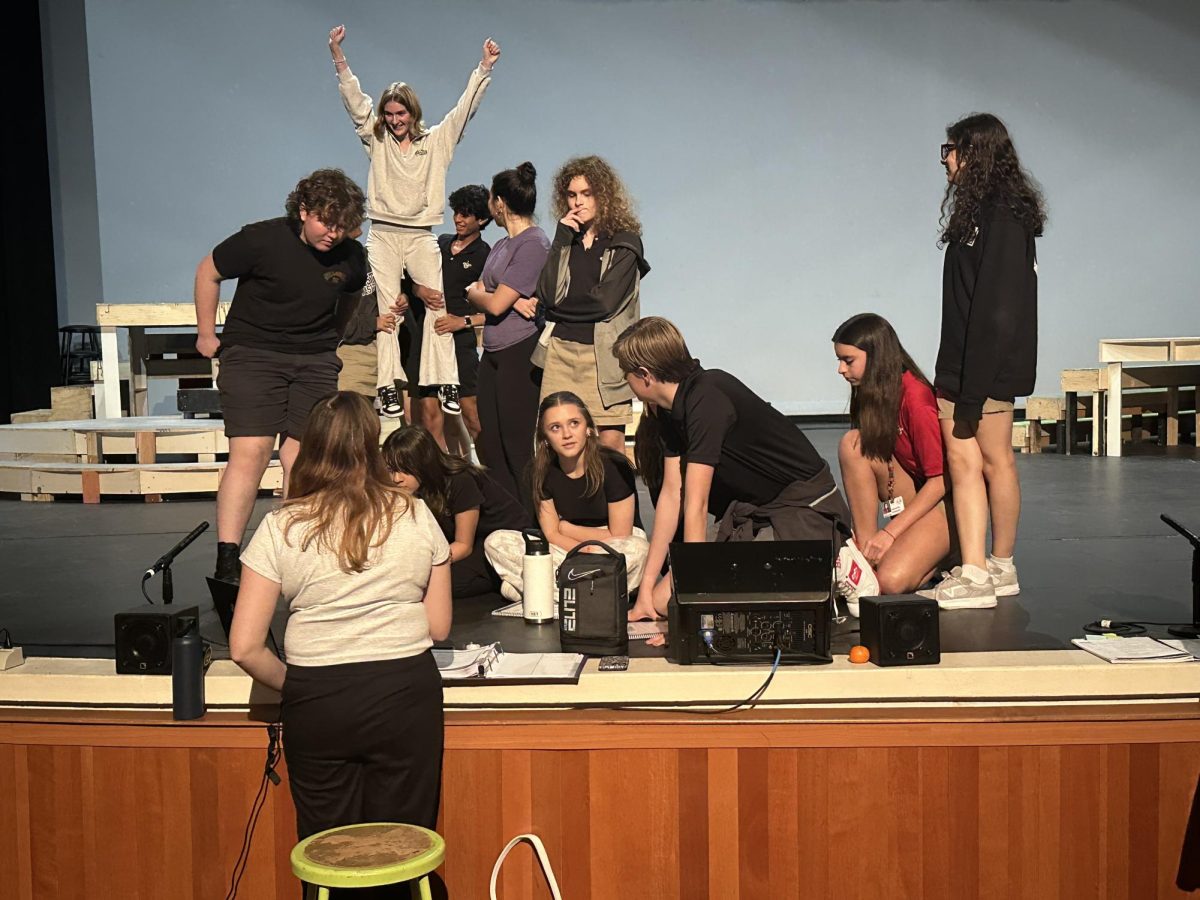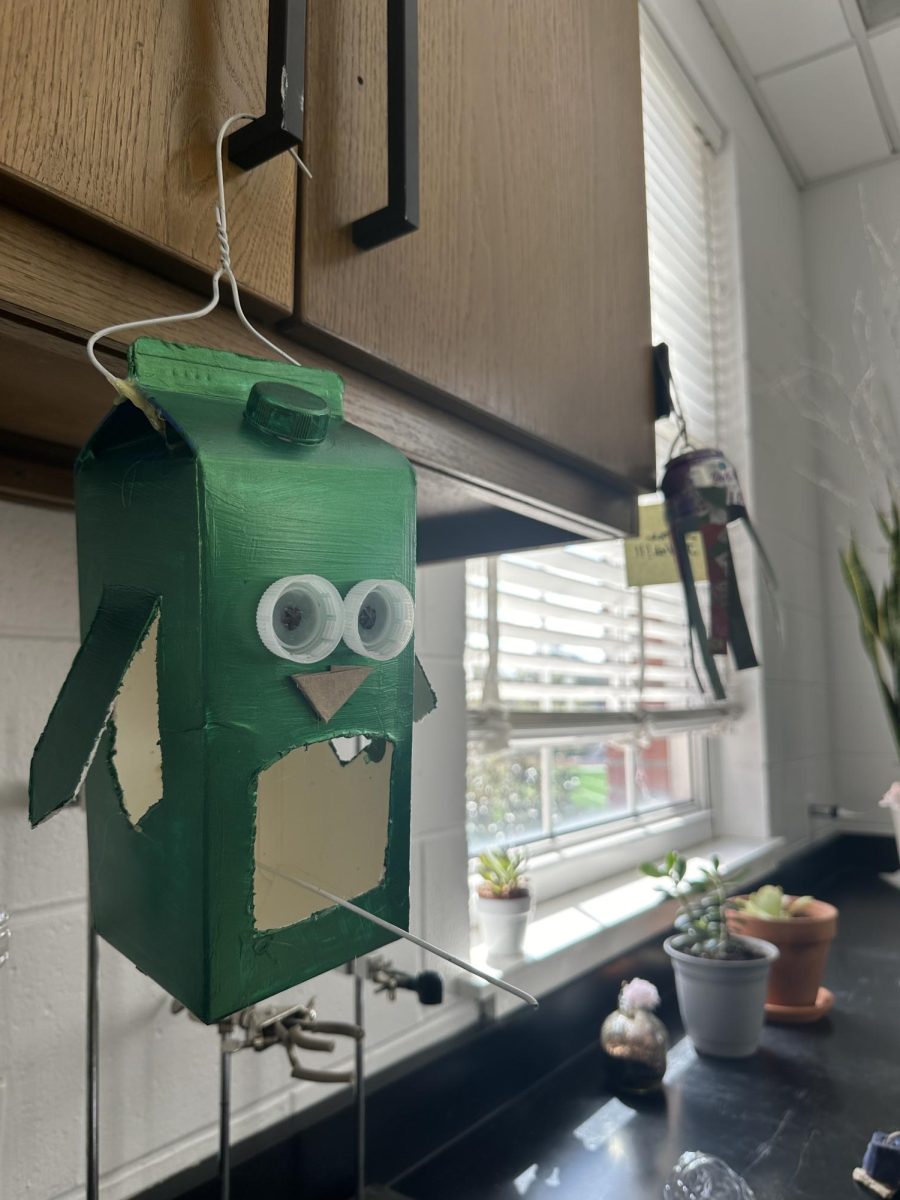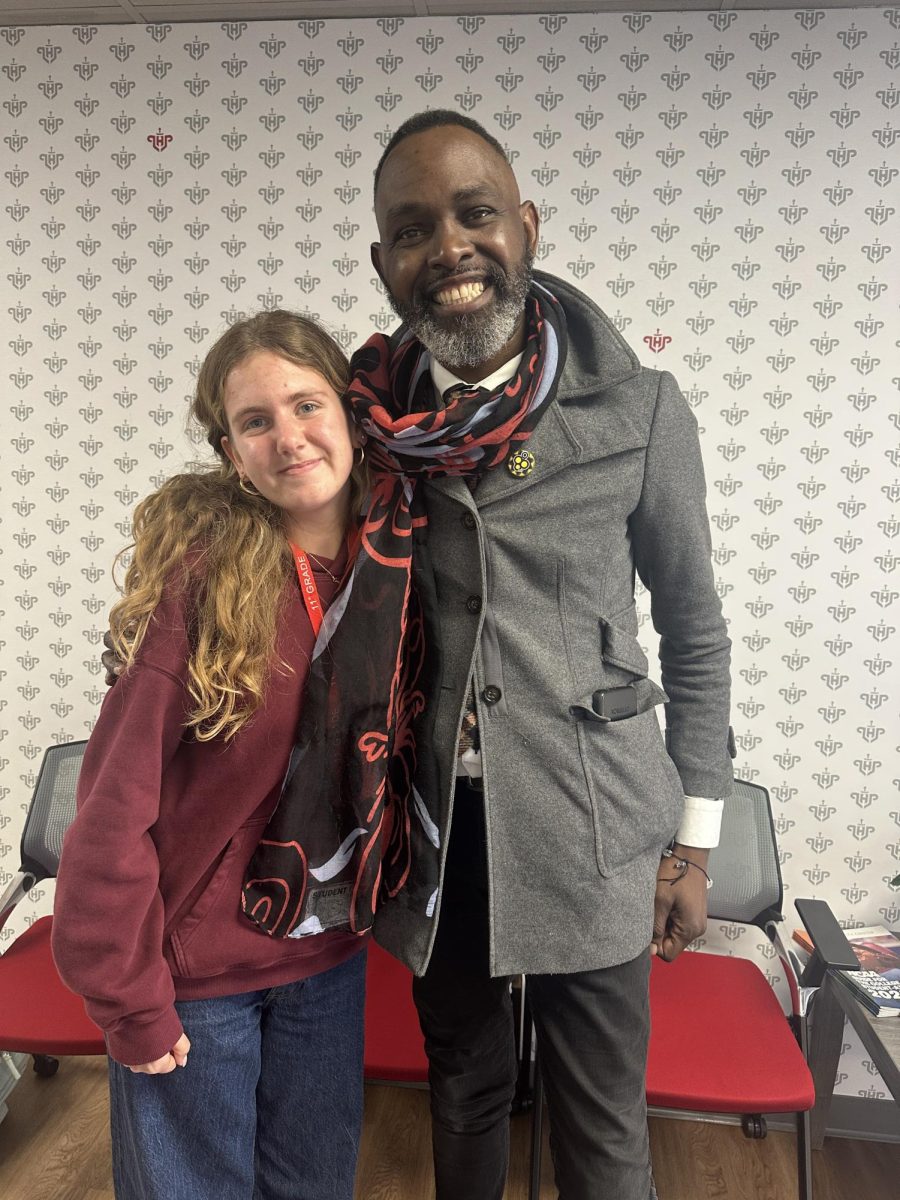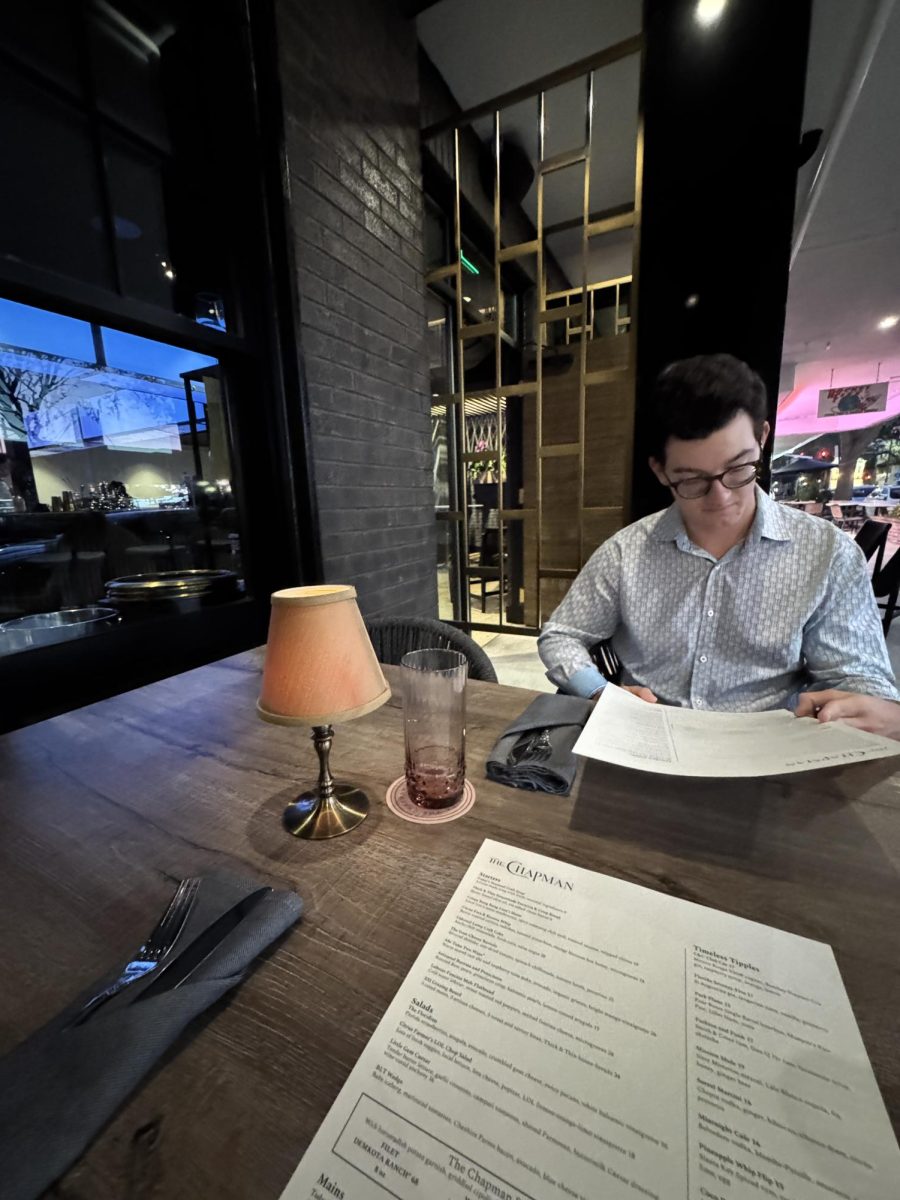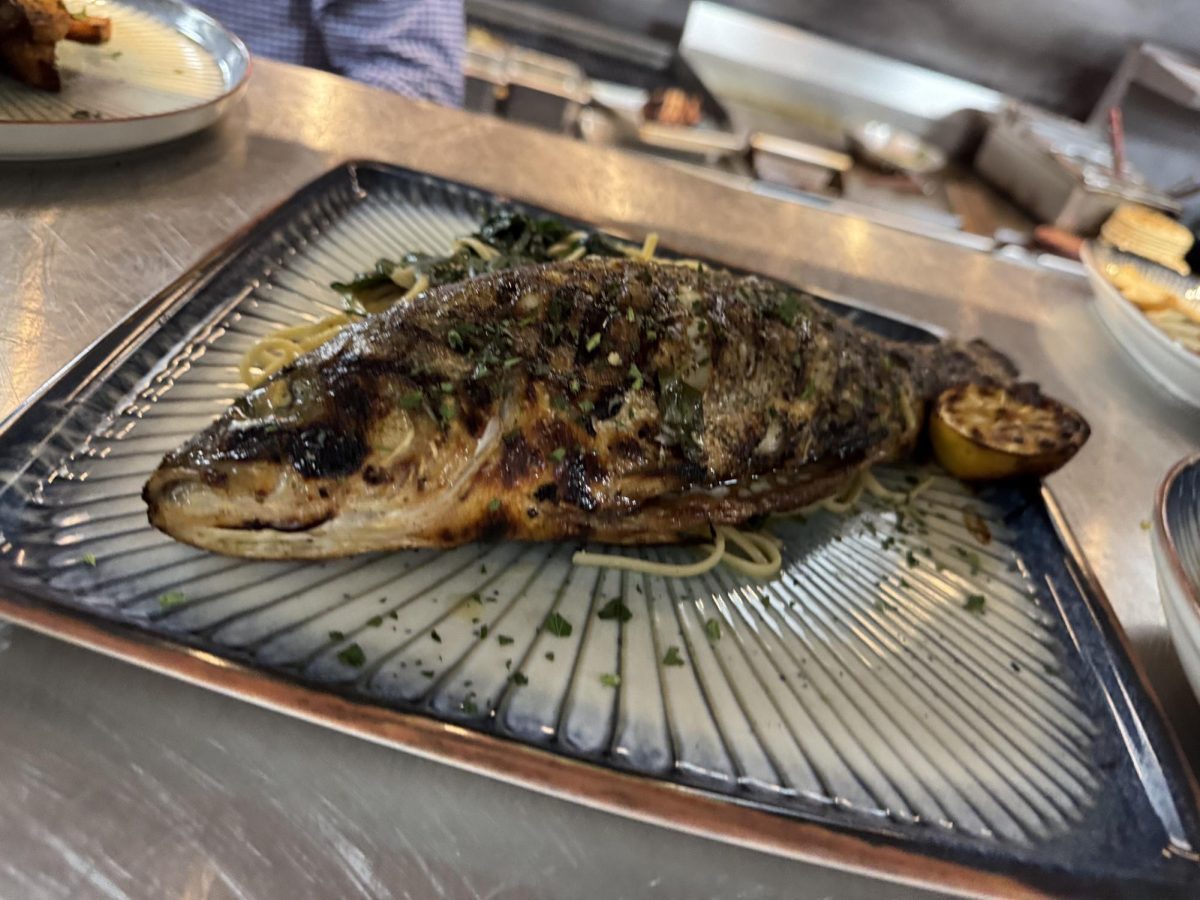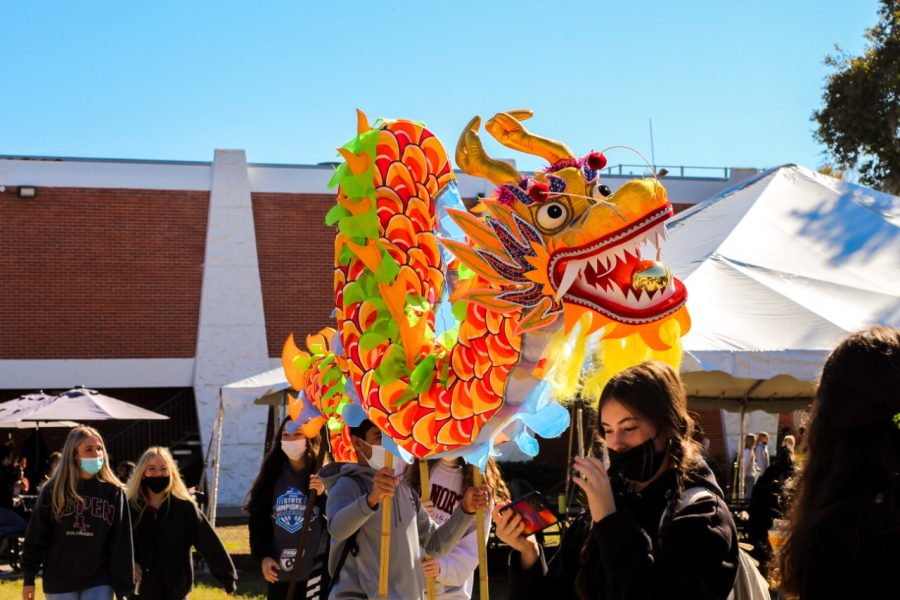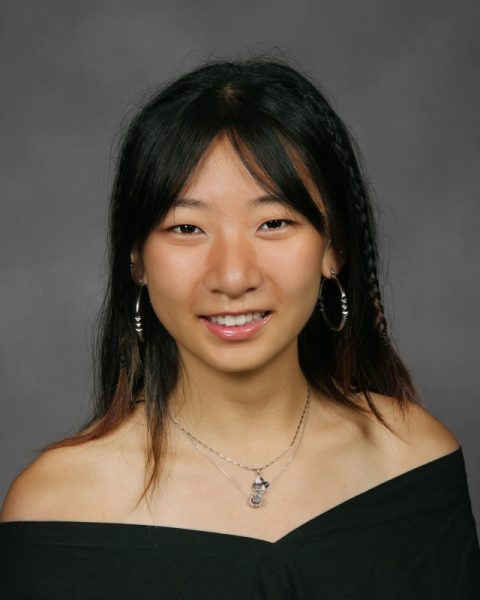Chinese New Year Begins a Year of Celebration
(Above, from left to right) Kate Ward, grade 9, Grace Wright, grade 9, Tynan Tracy, grade 9, Wali Hasan, grade 9, and Sophia Carraway, grade 10, perform and enjoy the Chinese dragon dance. The dragon dance was performed by LHP’s Chinese I and II classes in front of the Calkins Library, requiring students to build teamwork in order to learn how to walk together gracefully. The dragon dance is both a showcase of unification and power.
March 14, 2022
The last time I wore this QiPao was at my cousin’s wedding. I wore it again at Lake Highland Preparatory School for another important occasion: Chinese New Year celebration — the Year of the Tiger. Chinese New Year runs on the lunar calendar, making the first day of the year land on February 1, 2022. While my cousin in China got a full two weeks off school, I was able to share this holiday with other students and my family.
Earlier in the day, students were privileged to watch traditional Chinese performances MC’d by students taking Chinese class Sofia Minutoli, grade 11, and Ronin Ford, grade 12. The Tibetan dance and a Chinese folk song were performed by award-winning dancer Xiaoyu Tang and award-winning singer Lilian Guo, along with students Avery Peterson, grade 9, and Ashley Robinson, grade 9, singing as a trio. Fellow student Tammy Yang’s, grade 10, father, Mr. Jiufeng Wei, awed the students with his Chinese traditional acrobatics, spinning a forty-pound clay pot on his head as the finale. Isabella Delbakhsh, grade 10, shared, “I got to learn more about Chinese culture through their performances. I didn’t realize how big this celebration was until now.”
I followed the students to the Calkins Library, where the celebration took place. Red couplets framed the doors, wishing whoever walked through the entrance a year full of luck and wealth. Inside, I was greeted by a palette of the lucky color red. Chinese lanterns swayed from above, paper flowers bloomed on arranged branches, and red packets filled with treats framed an altar of tangerines. Students surrounded the red packet table, digging for goodies which included individually packaged milk tea-flavored mochi, hard peach candies, and green tea choco rolls. The room was set afloat with flutes of Chinese music while a student started singing a Karaoke Chinese song. An audience gathered below the balcony, their heads tilted up in excitement, as Chinese students lined up the stairs for their turn.
Mrs. Beryl Zhang, LHP’s Chinese teacher credited with organizing this celebration, shared the significance of Chinese New Year. “It’s a time when the biggest enemies can become friends and express best wishes to each other; a new start — it’s about togetherness. It’s the only major holiday when coming home is required,” she explained.
In addition to all of Mrs. Zhang’s students, members of the Chinese Club also helped decorate and run the event. The Co-President of the Chinese Club, Elle Dafnis, grade 11, shared why this holiday is special to her. She noted, “It’s incredible how it brings everyone together. There’s so much positivity, and everyone is so tight-knit.”
There was an array of different games and activities to play. Paper cutting, origami, calligraphy, and chopstick competition stations provided a perfect opportunity to learn about this holiday’s culture and history. When asked how long they thought Chinese New Year had been celebrated, students guessed from 500 to 2,500 years. They were shocked to learn the answer of 3,500 years.
Changing out of my QiPao after school, I drove home to find my dad making stuffing for dumplings and my mom flouring the board. Dumplings symbolize luck and unity since they are round and full of goodness. There were a few dates, peanuts, and clean pennies which we secretly tucked into the stuffing of our dumplings, representing a year of sweetness, fertility, and money, respectively. After boiling the dumplings, we ate while delicious steam clouded our faces. “Ah! I bit into something hard; it’s the penny!” I yelled in triumph.
We stuffed ourselves with as many dumplings as we could, racing to see who could bite into the most specially stuffed dumplings. The rest of the dinner table was crowded with whole fish, shrimp, braised pork, taro, soy eggs, steamed buns, NianGao (rice cake), and candied hawthorn sticks. After dinner, my brother and I knelt on our knees to kowtow, or bow, to our parents, thanking them for taking care of us. My parents handed us each a red packet, filled with money. Laughter rang around the room.
We rushed onto WeChat — China’s penultimate communication and social media app — and prepared for QiangHongBao — a race to click on the digital red packet to accept money.
“Ah! Grandpa sent one!” I yelled and stabbed my finger at the screen to tap it open. Confetti filled my screen as 22.22¥, the equivalent of $3.49, came into my account. “Two shares left,” the screen announced, and they were quickly snatched up by my cousin and aunt in China. My dad sent out a share of 188.88¥, or $29.69, and my cousin got it first. Then my aunt teased us with five shares of 6.66¥, about $1.05! The numbers play a significant role with the twos representing the current year and lucky numbers eight and six sounding like the Chinese words for rich and to flow. We played well into the night, stopping only to watch the Chinese New Year Gala screen shared onto the television.
I looked at my family around me and thought of the family I had an ocean away. I can’t wait until we reunite face to face. Chinese New Year is a time for togetherness and good fortune. It sets the tone for the new year to come.
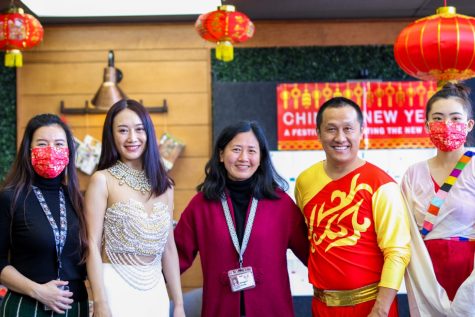
(Serena Young)
